TECHNOLOGY
AON’s DCAM(DLP-based Ceramic Additive Manufacturing) Technology embedded in ceramic 3D printer, ZIPRO is aimed not only to precisely manufacture ceramic products, but also to enable manufacturers with milling machines or molding press machines to manufacture the mass volume of products in a cost-effective way.
The cutting-edged beam projector embedded in AON’s DCAM Technology is set to beam Ultraviolet Light in a top-down direction to the ultrathin layers of objects so that each of the layers are quickly and strongly hardened in seconds. Like a normal milling or press production, end-user starts design works first with CAD software to get the object file in STL format. The object file needs to be sliced by ZIPROS, which is the dedicated slicing software for ZIPRO. The slicing work with ZIPROS is easy and convenient enough to complete all the slicing works in a several mouse-clicking. Once the slicing work is complete, end-user is able to transfer the sliced STL file saved in a zip file to ZIPRO in one of 3 ways – USB stick, serial port connection, WIFI. The high-end sensors and circuits installed inside of ZIPRO are perfectly protected by strong aluminum structures and 10mm-thick polycarbonates doors with UV-blocked coating. ZIPRO may last semi-permanently thanks to strong materials and perfect protection. End-users do not have to worry about if they need to purchase a new machine whenever AON introduces a new slurry or material for the original products or usage. All they need to do is just to update the software installed in ZIPRO as long as the capacity of key parts is allowed to remain the same.
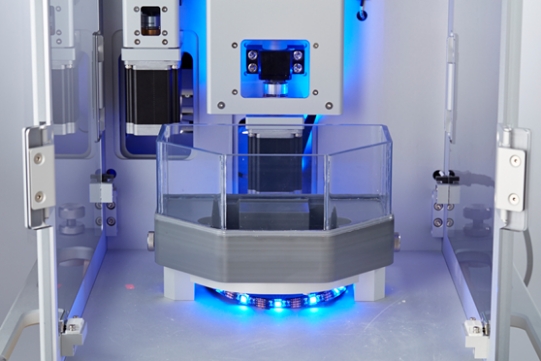
DENTAL
When it comes to flexural strength for dental prostheses, ISO 6872:2008 indicates that the minimal strength shall be 300MPa. AON Zirconia slurry for dental prostheses has been tested and proved with the flexural strength of maximum 999MPa and average 814MPa on January, 2021 by Korea Institute of Ceramic Engineering and Technology(Please refer to below certificates of test).
It is one of AON’s strategic options to keep the flexural strength of dental prosthesis remained near 1000MPa. Considering the average chewing strength for human teeth is 200~350MPa, the high flexural strength over 1000MPa may appear risky to make the counter-teeth brittle.
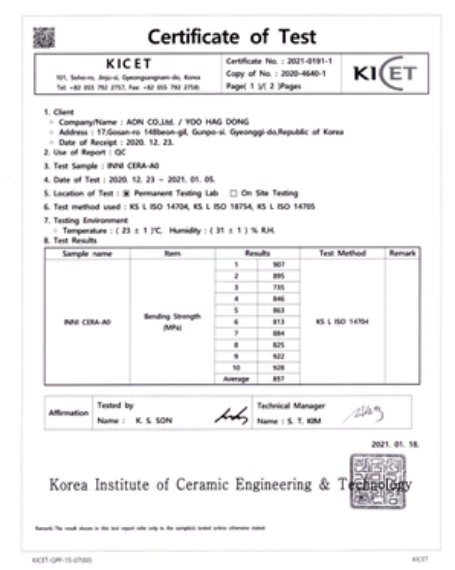
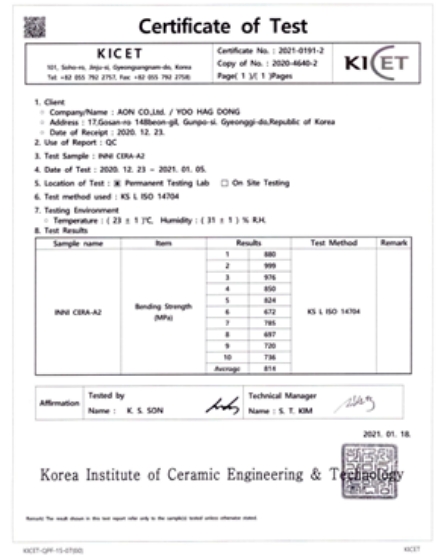
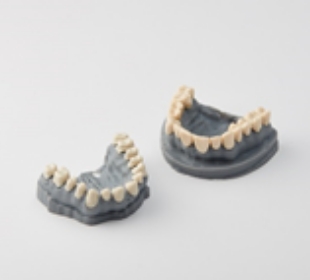
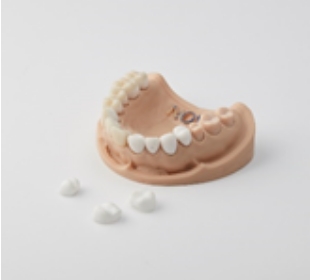
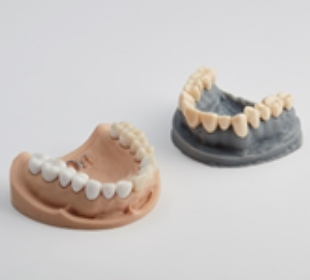
MEDICAL
Medical parts 3D-printed by ZIPRO are mostly orthopedic applications. The manufacturer of medical parts conventionally adopted milling or molding press production process although its processes are high-costing and time-consuming. Since they noticed that 3D-printing technology would offer cost-effective and mass production process, they started to look for the manufacturer who can supply the 3D-printer and the dedicated ceramic materials. Therefore, it was not easy to find out the manufacturer who has proved their 3D-printing technology replacing the existing milling or press production process. Even if they meet manufacturer in advanced countries, they can hardly adopt the 3D-printing technology due to high costs and unreliable performance.
AON’s ZIPRO offers the 3D-printing technology with a reasonable cost and reliable performance. AON’s DCAM Technology has been tested and proved its performance with Zirconia, Silicon Nitride, Alumina materials by manufacturers of orthopedic applications in Israel and USA (Please refer to below chart).
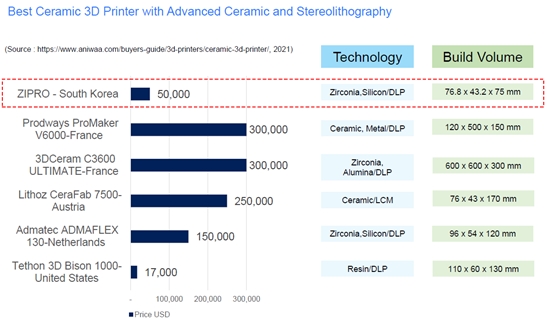
INDUSTRIAL
Mechanical engineering, aerospace industry is facing increasing demands from customers for higher precision, lower price, and more durability. 3D-printing technology offers an alternative to replace the milling or molding production process traditionally adopted by the manufacturers. Ceramic materials for mechanical or aerospace parts are required to be precisely processible with the required hardness, density, accuracy and lighter weight. Zirconia, Silicon Carbide and Alumina materials are types of ceramic material for industrial applications.
Alumina Ceramic
Alumina is one of the most widely used advanced ceramic, and is made from aluminum oxide. This ceramic can be made via different types of manufacturing processes including isotactic pressing, injection molding and extrusion. Finishing can be accomplished by precision grinding and lapping, laser machining and a variety of other processes.
Alumina’s high ionic inter-atomic bond makes it chemically very stable, thereby making it a good electrical insulator. Further it is extremely resistant to wear and corrosion and has a high mechanical strength. Due to all these qualities, alumina components are used in semiconductor components, pump components, electrical insulations and automotive sensors.
Zirconia Ceramic
Made from zirconium oxide, this ceramic has excellent strength and a high resistance to corrosion, wear and abrasion. Since it has a high tolerance to degradation, zirconia is the material of choice in the manufacturing of bearings and grinding. Further due to its high resistance to developing cracks, commonly referred to as ‘fracture toughness’, zirconia is used in structured ceramics, automotive oxygen sensors and dental ceramics.
Silicon Carbide Ceramic
When the grains of silicon carbide are bonded together through a process called sintering, they form a very hard ceramic. Due to its hardness, it is used in applications requiring high endurance such as car brakes, car clutches, ceramic plates and bullet proof vests.
AON’s ZIPRO offers to the manufacturers of industrial applications the 3D-printing technology with using the above materials in a reasonable cost and reliable performance. AON’s DCAM Technology can be applied to develop the ceramic material applicable for particular industrial application.

